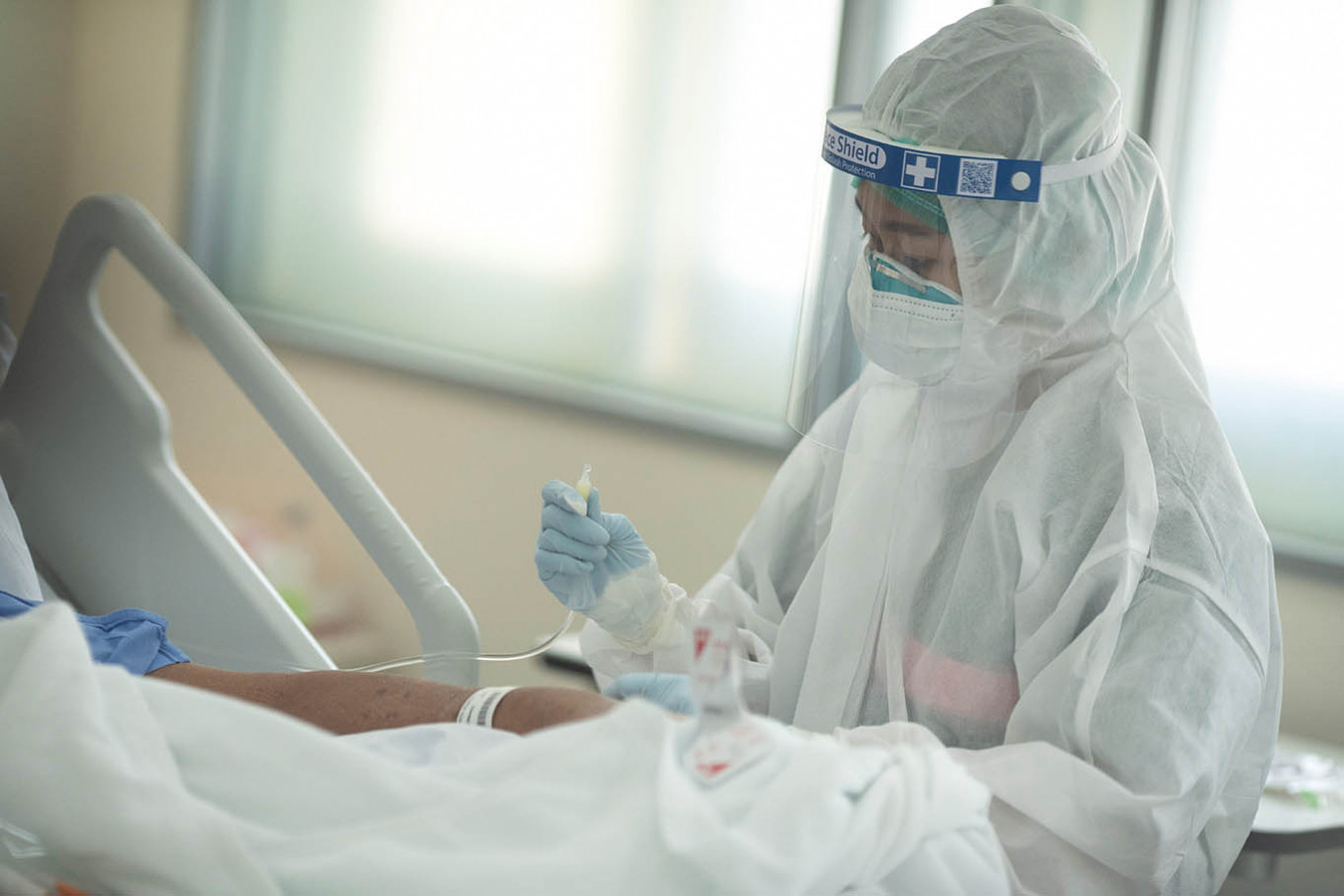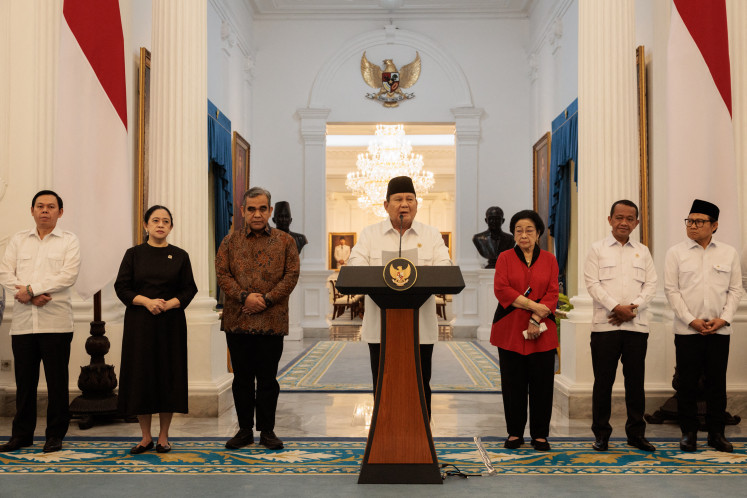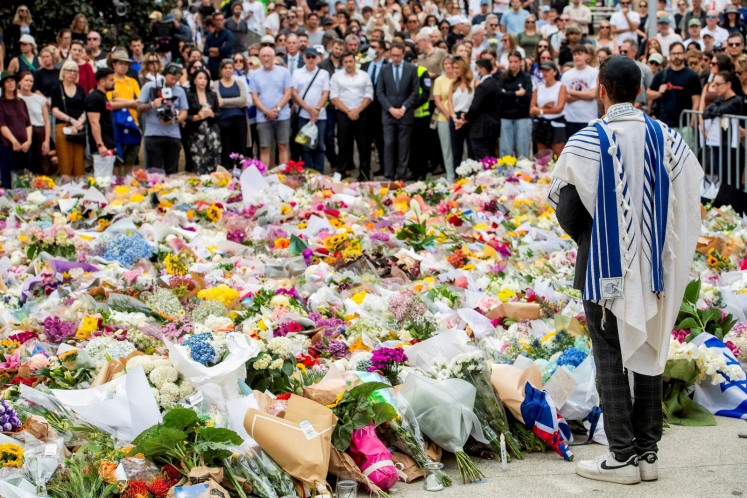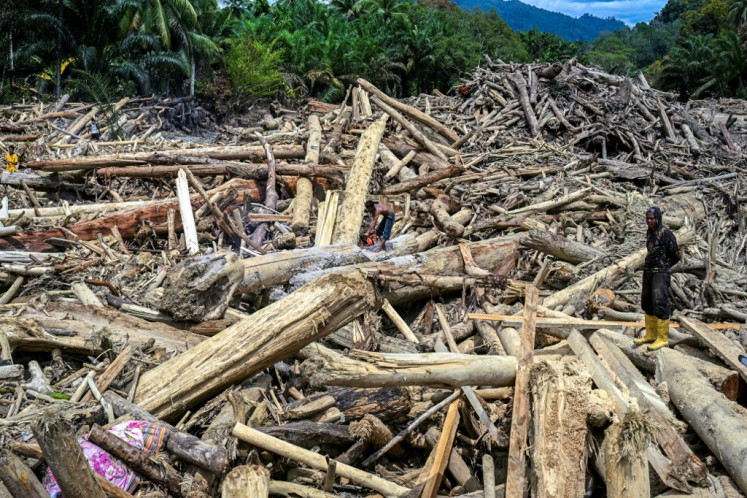Popular Reads
Top Results
Can't find what you're looking for?
View all search resultsPopular Reads
Top Results
Can't find what you're looking for?
View all search resultsCOVID-19: Who supplies protective equipment in ASEAN?
ASEAN countries can use the fund to buy medical supplies during disease outbreaks in the future. But do we know who supplies personal protective equipment (PPE) in ASEAN?
Change text size
Gift Premium Articles
to Anyone
O
ne initiative resulting from the April 14 Special ASEAN Summit video conference was the proposed establishment of the COVID-19 ASEAN Response Fund, which was widely supported by ASEAN leaders. ASEAN countries can use the fund to buy medical supplies during disease outbreaks in the future. But do we know who supplies personal protective equipment (PPE) in ASEAN?
As ASEAN member countries use numerous measures to combat the COVID-19 pandemic, trade can serve as a powerful, low-cost tool to improve access to PPE. To protect themselves and their patients from being infected and infecting others, health workers need PPE products including gloves, hair covers, face masks and shields, goggles and gowns. Here, I argue that ASEAN countries import some PPE products from countries outside the region, but most ASEAN countries heavily tax imports of these products.
In the pre-COVID-19 period, the United Nations trade data for 2018 revealed that ASEAN countries not only manufactured PPE products to trade regionally, but also for export to the rest of the world. At least one ASEAN country was listed in the top five global exporters of each relevant product of PPE in 2018. This includes Vietnam for gowns, hair covers, masks and gloves; and Malaysia and Thailand for gloves.
The total value of global exports of PPE products was US$47.5 billion in 2018. The majority of such exports consisted of gloves, masks and gowns. More than 60 percent of these exports were supplied by the top five exporters. Global export of gloves was recorded at $15.6 billion, 76 percent of which was supplied by China, Malaysia, Thailand, Vietnam and Belgium. Global export of masks (i.e. textile masks and gas masks) totaled $13.6 billion, 63 percent of which was supplied by China, Germany, the United States, Vietnam and Mexico. China was also the top-ranked global exporter of other PPE products.
The total value of ASEAN exports of PPE products was $8.5 billion or 18 percent of global exports in 2018. The majority or 80 percent of such exports was in gloves and gowns (13 percent). The largest exporter of PPE products was Malaysia ($4.6 billion), followed by Vietnam ($1.7 billion) and Thailand ($1.4 billion).
Meanwhile, ASEAN countries also imported PPE products worth of about $1 billion. The majority of such imports was in gloves, gowns and masks. The largest importer of PPE products was Vietnam ($256 million), followed by Indonesia ($167 million) and Malaysia ($160 million).
However, not every ASEAN country produces all the PPE products needed by healthcare workers to tackle the COVID-19. Thailand and Vietnam were net exporters (value of exports minus value of imports) of gloves, goggles, gowns and hair covers, while being net importers of masks. Cambodia and Indonesia were net exporters of gloves, gowns and hair covers, while being net importers of goggles and masks. Malaysia was a net exporter of gloves and goggles. Myanmar was a net exporter of gowns and hair covers.
Other ASEAN countries were small net exporters of one PPE product such as Brunei for goggles, Laos for gowns, the Philippines for hair covers and Singapore for masks.
An individual country cannot produce all PPE products and hence relies on sourcing from within and outside the region. For example, ASEAN’s total imports of face masks reached $104 million in 2018, 91 percent of which was sourced from non-ASEAN countries. Major suppliers of masks outside ASEAN include China, South Korea, Japan, European Union, Taiwan and the US. Major suppliers of masks within ASEAN include Malaysia, Singapore, Thailand and Vietnam.
During the current COVID-19 period, however, sourcing PPE products from overseas has become increasingly challenging for ASEAN countries. Some ASEAN countries that can produce PPE themselves still face shortages as the containment measures to curb the virus spread prevent workers from working in the factories that are producing these products.
The widespread work-from-home directives under the COVID-19 control measures mean that many service tasks can be done remotely, but most production of goods such as COVID-19 PPE requires social proximity, not social distancing. These measures have therefore reduced labor inputs in the production process and hence lowered the outputs of COVID-19 PPE.
Furthermore, imports of PPE products from trading partners that do not have a free trade agreement (FTA) with ASEAN face high tariff barriers. Data from ASEAN Tariff Finder reveals that most ASEAN countries heavily tax imports of PPE products from non-FTA partners. Seven out of 10 ASEAN countries charge an average most-favored-nation (MFN) tariff rate of 9 percent or more on PPE products. These include Thailand (17.1 percent), Vietnam (15.3 percent), Myanmar (13.1 percent), Cambodia (12.3 percent), Indonesia (11.4 percent), the Philippines (11.4 percent), and Laos (9.6 percent). Brunei and Malaysia tax imports of PPE products less than 3 percent, while Singapore has eliminated all tariffs on these products.
In conclusion, ASEAN countries export one or more PPE products, but none of them can produce all the PPE products needed by healthcare workers to tackle the COVID-19 crisis. They have sourced PPE products from each other, China, the US and European countries. However, imports from the US and the European Union face high tariffs. Higher tariff rates increase prices of imported PPE products, resulting in larger public expenditure for healthcare interventions.
Eliminating tariffs on imports of PPE products from non-FTA partners could reduce the costs of healthcare interventions and improve access to PPE products in ASEAN.
---
Lead researcher in economic affairs at the ASEAN Studies Center, Institute of Southeast Asian Studies – Yusof Ishak Institute.










